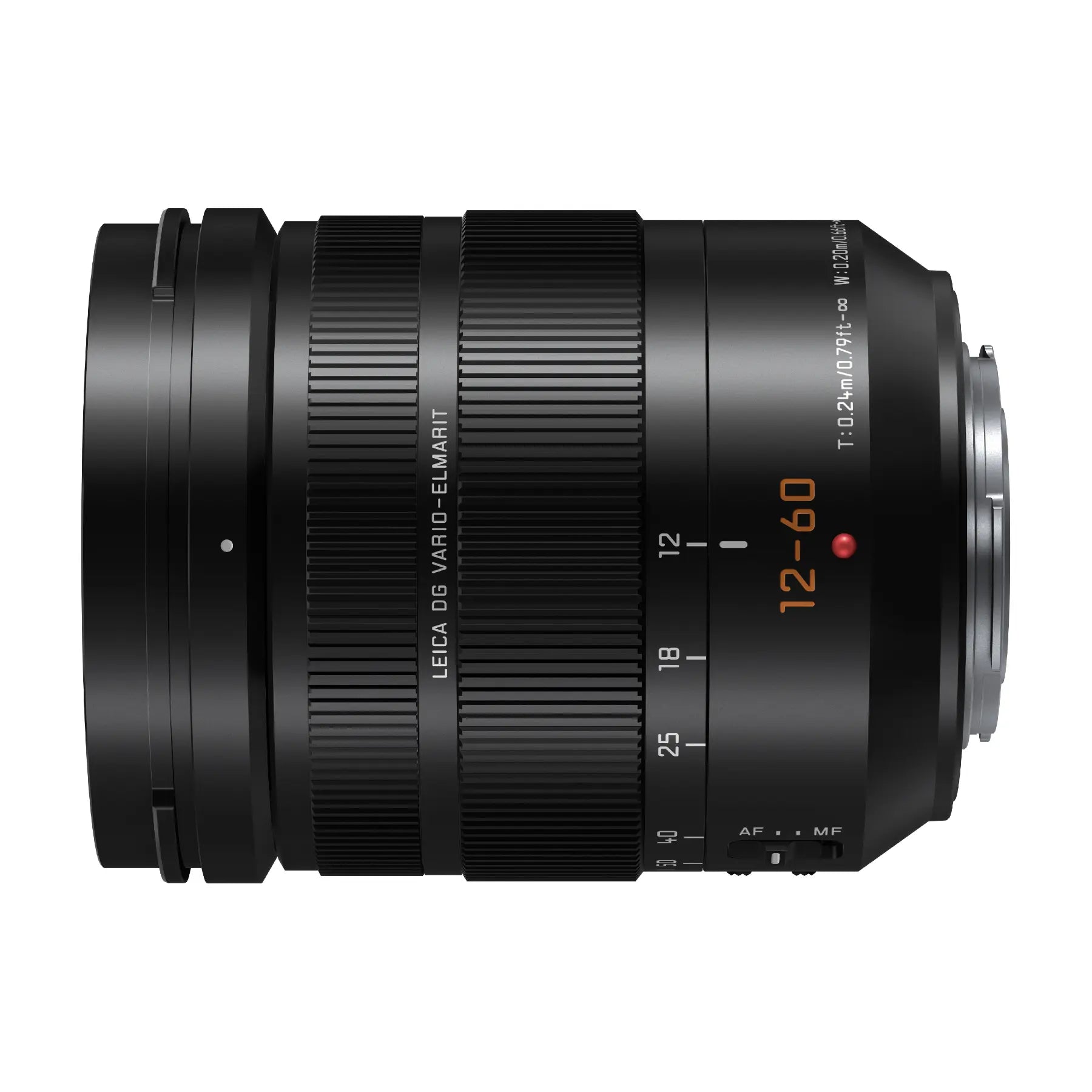Product Description
Panasonic 12-60mm f/2.8-4.0 Leica DG Vario-Elmarit Micro Four Thirds Lens: Versatile Zoom for Every Situation
The Panasonic 12-60mm f/2.8-4.0 Leica DG Vario-Elmarit Lens is a high-performance zoom lens designed for Micro Four Thirds cameras. With a 24-120mm full-frame equivalent focal length and 5x zoom range, this lens covers everything from dynamic landscapes to stunning portraits and low-light shots. Its f/2.8-4.0 aperture provides excellent depth of field control and beautiful bokeh, making it ideal for both photographers and videographers looking for versatility and image quality in every scenario.

Key Features:
- 12-60mm Focal Length (24-120mm equivalent): Covers a wide range of shooting needs from wide-angle to telephoto
- Fast f/2.8-4.0 Aperture: Ideal for low-light conditions and achieving a beautiful defocus effect
- Power O.I.S. (Optical Image Stabilizer): Reduces blur for sharper images, even in dim lighting
- Dual I.S. Compatibility: Works with Panasonic’s 5-axis Dual I.S. and Dual I.S. 2 systems for enhanced stabilization
- Silent Operation: Inner focus drive system and micro-step aperture control for smooth, quiet video recording
- Rugged, Weather-Sealed Design: Dust, splash, and freeze-proof down to -10°C
- Barycentric Stability: Minimizes image shifts during zooming for consistent, stable footage

Versatile 5x Zoom for Every Shooting Situation
With a 12-60mm focal range (equivalent to 24-120mm on a full-frame camera), this lens offers remarkable versatility, making it suitable for everything from wide-angle landscapes to detailed portraits and close-ups. The f/2.8-4.0 aperture ensures you can shoot in various lighting conditions, while the ability to create beautiful background blur enhances your creative options.

High-Speed Performance and Beautiful Bokeh
Thanks to its f/2.8-4.0 high-speed aperture, this lens delivers outstanding low-light performance and a stunning defocus effect that enhances portraiture and artistic shots. The shallow depth of field allows your subjects to stand out against a beautifully blurred background, adding a professional touch to your images.

Advanced Stabilization for Sharp, Clear Images
Equipped with Power O.I.S. (Optical Image Stabilizer), this lens effectively compensates for camera shake, ensuring sharp, blur-free images, even when shooting handheld or in low-light environments. Additionally, it is fully compatible with Panasonic’s 5-axis Dual I.S. and Dual I.S. 2 stabilization systems, providing even greater control and stability for handheld shooting.

Excellent for Video Recording
The Panasonic 12-60mm f/2.8-4.0 is an excellent choice for videographers. Its silent inner focus drive system and micro-step aperture control allow for smooth and silent operation, making it ideal for professional-quality video capture. The lens’s barycentric stability ensures minimal image shifts during zooming, which is crucial for maintaining stable, high-quality footage.

Built to Withstand the Elements
This lens is designed for professional use in challenging environments. Its compact, rugged build is dust, splash, and freeze-proof down to -10°C, allowing you to shoot confidently in harsh weather conditions. Whether you’re out in the field or shooting in unpredictable environments, the Panasonic 12-60mm f/2.8-4.0 ensures reliability and durability.
For full specifications click Here

Payment & Security
Your payment information is processed securely. We do not store credit card details nor have access to your credit card information.



















